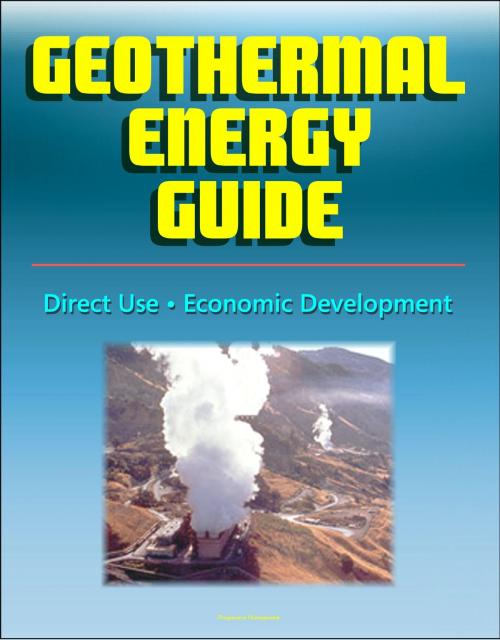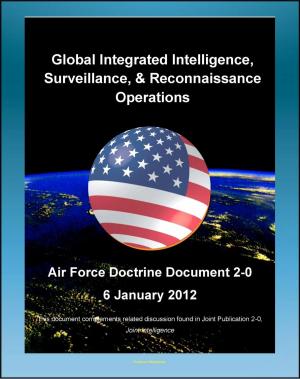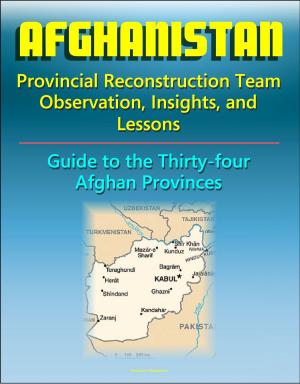Geothermal Energy Guide: Clean Energy, Economic Development, Direct Use, Government Research Program, Geothermal Power Overview
Nonfiction, Science & Nature, Technology, Power Resources, Social & Cultural Studies, Political Science, Government, Public Policy| Author: | Progressive Management | ISBN: | 9781476225371 |
| Publisher: | Progressive Management | Publication: | May 5, 2012 |
| Imprint: | Smashwords Edition | Language: | English |
| Author: | Progressive Management |
| ISBN: | 9781476225371 |
| Publisher: | Progressive Management |
| Publication: | May 5, 2012 |
| Imprint: | Smashwords Edition |
| Language: | English |
This is a unique compilation of government documents about geothermal power, covering many aspects of this important source of green energy.
Contents:
Part 1: Common Questions About Geothermal Energy
Part 2: Geothermal Technologies Program
Part 3: Geothermal Direct Use
Part 4: Geothermal Energy & Economic Development
Part 5: Geothermal Technologies Program Exploration Technologies - Technology Needs Assessment
Part 6: Geothermal Energy—Clean Power From the Earth's Heat
Direct use of the Earth's heat for agricultural, recreational, and industrial purposes dates back to earliest human history. Modern technology has increased the use of geothermally heated fluids dramatically, resulting in the worldwide production of more than 10,000 megawatts annually of geothermal energy. Geothermal heating and cooling of both commercial and residential buildings is already widespread throughout the world. There is great potential for increasing the direct use of the Earth's heat, thereby reducing dependence on fossil fuels. Geothermal energy currently supplies less than 1 percent of the energy consumed in the United States. If the presently known geothermal resources are fully developed in conjunction with continuing technological advances, this clean, renewable energy source could contribute several times that amount. The purpose of this report is to describe the distribution and nature of geothermal energy, review geothermal systems, consider potential resources, and summarize the role of earth-science information in assessing geothermal resources worldwide. Energy decisions for the Nation should be based on good science. The USGS supports the Nation by providing the best information possible on energy resources to enable sound decisions for public health and prosperity.
With modern technology, drills can penetrate thousands of meters into the Earth in search of geothermal resources. Such drilling has resulted in the discovery of geothermal fluid as hot as 500°C, which can provide a resource of high-pressure steam to drive turbine generators at the Earth's surface. The traditional, ancient uses of geothermal water continue to have considerable scenic and recreational value, but the present-day capability to produce high-temperature fluid through drilled wells opens the door to diverse utilization of geothermal energy over a broad range of temperatures. Information gathered from measurements made during flow testing of geothermal wells can indicate how much power they can provide. A "typical" commercial geothermal well can power between 5 and 8 megawatts of electrical generation capacity (1 megawatt = 1,000 kilowatts = 1 million watts).
This is a unique compilation of government documents about geothermal power, covering many aspects of this important source of green energy.
Contents:
Part 1: Common Questions About Geothermal Energy
Part 2: Geothermal Technologies Program
Part 3: Geothermal Direct Use
Part 4: Geothermal Energy & Economic Development
Part 5: Geothermal Technologies Program Exploration Technologies - Technology Needs Assessment
Part 6: Geothermal Energy—Clean Power From the Earth's Heat
Direct use of the Earth's heat for agricultural, recreational, and industrial purposes dates back to earliest human history. Modern technology has increased the use of geothermally heated fluids dramatically, resulting in the worldwide production of more than 10,000 megawatts annually of geothermal energy. Geothermal heating and cooling of both commercial and residential buildings is already widespread throughout the world. There is great potential for increasing the direct use of the Earth's heat, thereby reducing dependence on fossil fuels. Geothermal energy currently supplies less than 1 percent of the energy consumed in the United States. If the presently known geothermal resources are fully developed in conjunction with continuing technological advances, this clean, renewable energy source could contribute several times that amount. The purpose of this report is to describe the distribution and nature of geothermal energy, review geothermal systems, consider potential resources, and summarize the role of earth-science information in assessing geothermal resources worldwide. Energy decisions for the Nation should be based on good science. The USGS supports the Nation by providing the best information possible on energy resources to enable sound decisions for public health and prosperity.
With modern technology, drills can penetrate thousands of meters into the Earth in search of geothermal resources. Such drilling has resulted in the discovery of geothermal fluid as hot as 500°C, which can provide a resource of high-pressure steam to drive turbine generators at the Earth's surface. The traditional, ancient uses of geothermal water continue to have considerable scenic and recreational value, but the present-day capability to produce high-temperature fluid through drilled wells opens the door to diverse utilization of geothermal energy over a broad range of temperatures. Information gathered from measurements made during flow testing of geothermal wells can indicate how much power they can provide. A "typical" commercial geothermal well can power between 5 and 8 megawatts of electrical generation capacity (1 megawatt = 1,000 kilowatts = 1 million watts).















